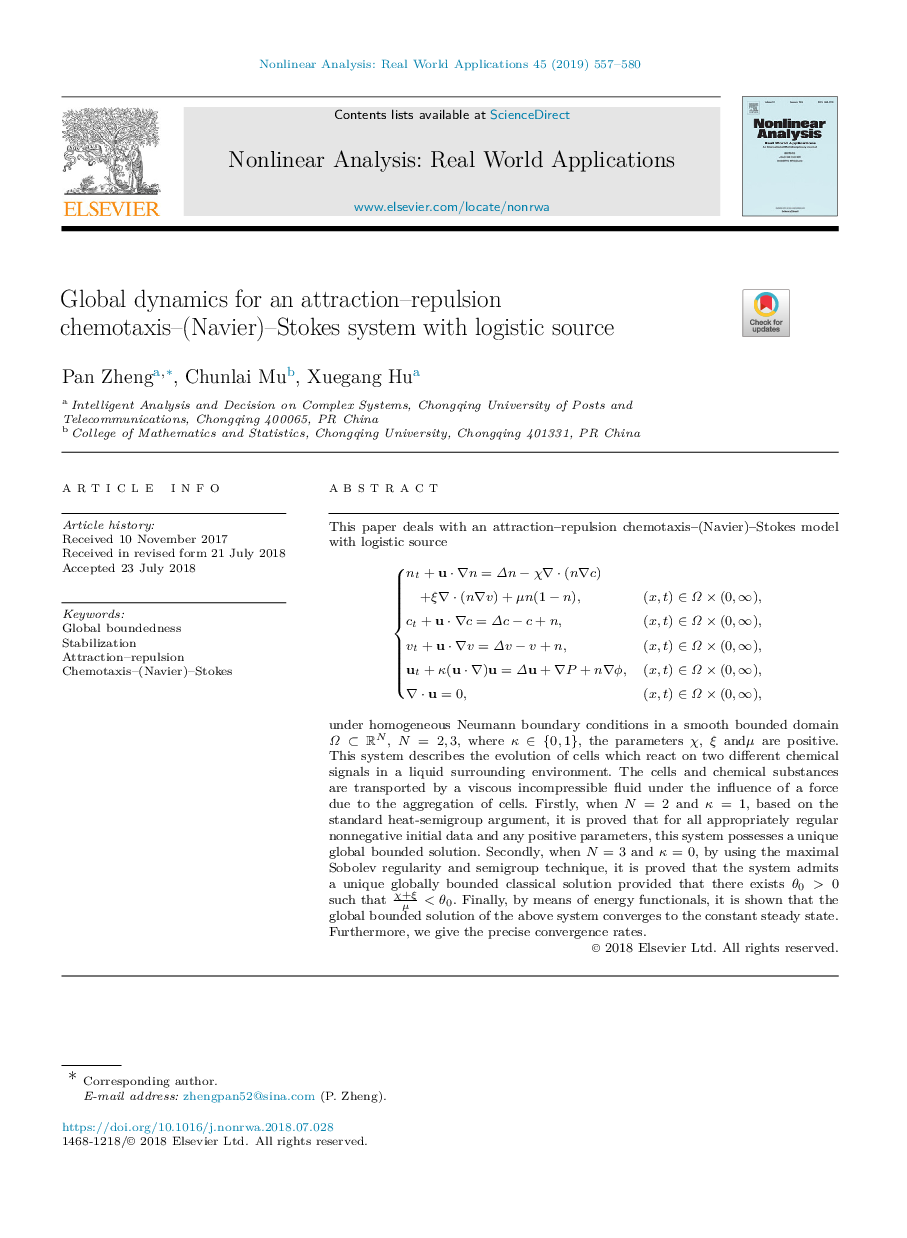| Article ID | Journal | Published Year | Pages | File Type |
|---|---|---|---|---|
| 7221895 | Nonlinear Analysis: Real World Applications | 2019 | 24 Pages |
Abstract
This paper deals with an attraction-repulsion chemotaxis-(Navier)-Stokesmodel with logistic source nt+uâ
ân=ÎnâÏââ
(nâc)+ξââ
(nâv)+μn(1ân),(x,t)âΩÃ(0,â),ct+uâ
âc=Îcâc+n,(x,t)âΩÃ(0,â),vt+uâ
âv=Îvâv+n,(x,t)âΩÃ(0,â),ut+κ(uâ
â)u=Îu+âP+nâÏ,(x,t)âΩÃ(0,â),ââ
u=0,(x,t)âΩÃ(0,â),under homogeneous Neumann boundary conditions in a smooth bounded domain ΩâRN, N=2,3, where κâ{0,1}, the parameters Ï, ξ andμ are positive. This system describes the evolution of cells which react on two different chemical signals in a liquid surrounding environment. The cells and chemical substances are transported by a viscous incompressible fluid under the influence of a force due to the aggregation of cells. Firstly, when N=2 and κ=1, based on the standard heat-semigroup argument, it is proved that for all appropriately regular nonnegative initial data and any positive parameters, this system possesses a unique global bounded solution. Secondly, when N=3 and κ=0, by using the maximal Sobolev regularity and semigroup technique, it is proved that the system admits a unique globally bounded classical solution provided that there exists θ0>0 such that Ï+ξμ<θ0. Finally, by means of energy functionals, it is shown that the global bounded solution of the above system converges to the constant steady state. Furthermore, we give the precise convergence rates.
Related Topics
Physical Sciences and Engineering
Engineering
Engineering (General)
Authors
Pan Zheng, Chunlai Mu, Xuegang Hu,
